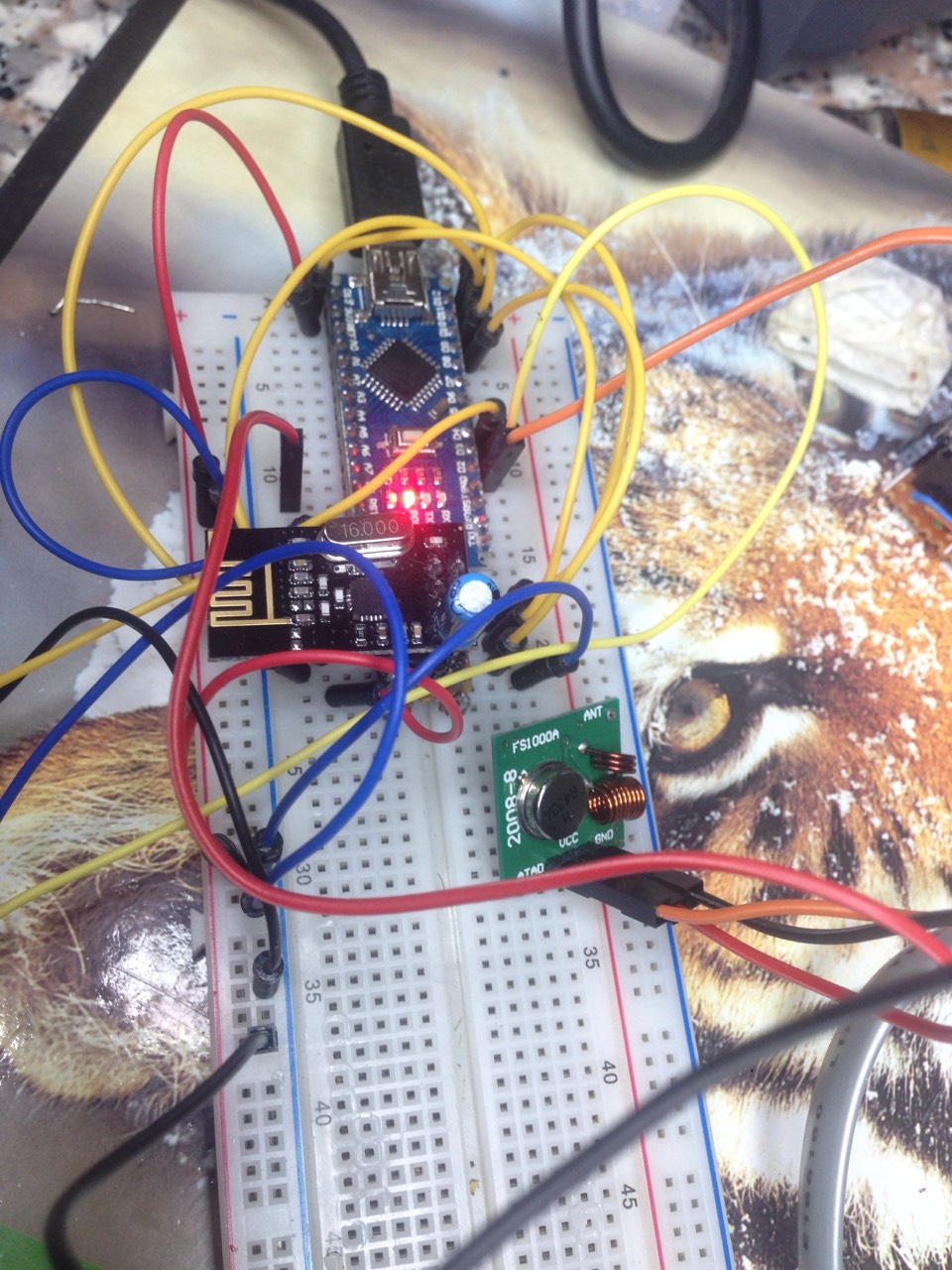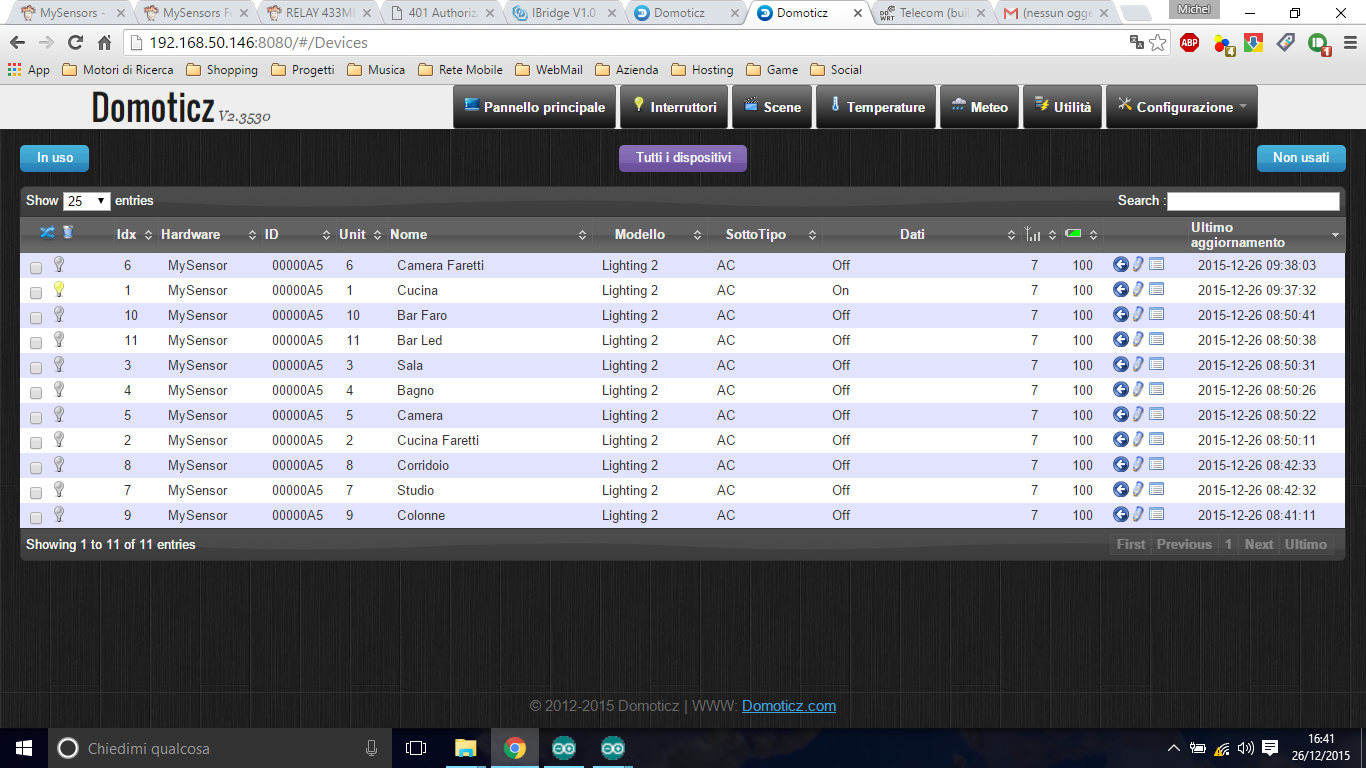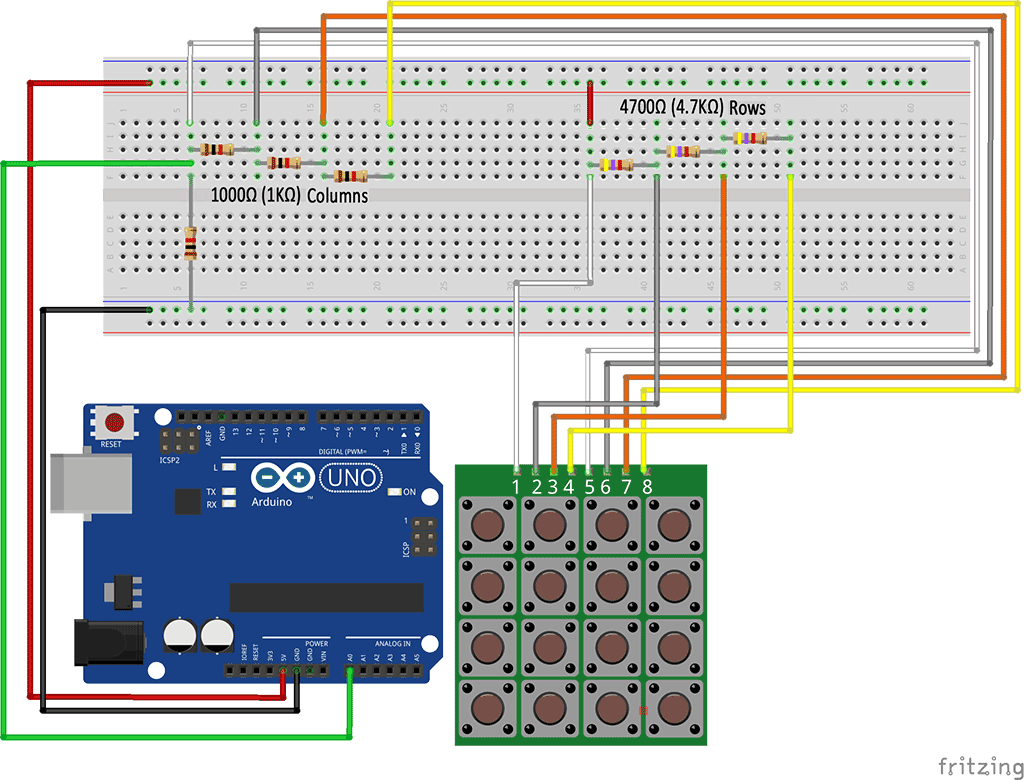RELAY 433MHZ + KEYPAD 4x4 COMANDER (vera-domoticz)
-
Hello everyone , I'm trying to create a gateway with the following modules ;
433 sender
4x4 keypad
Arduino mini / nano
NRF24L01
10uf Capacitorhe project is in development I'm stuck in the insertion of the keypad would use 4 -pin analog and 4 digital pins . I welcome suggestions on code.
link where it started my idea: http://forum.mysensors.org/topic/1557/combined-mysensor-gateway-with-433mhz-transmitter-homeeasy-klik-aan-klik-uit
link original code which I then edited: https://github.com/meijeren/MySensors-RF433-Node
https://codebender.cc/sketch:209936
-
@Michel-It There is an Adruino module for scanning 4x4 key matrixs. You can find it here: http://playground.arduino.cc/Main/KeypadTutorial
-
I have one better, but how to implement it in code mysensor?

.
New Code > sketch + Library > https://codebender.cc/sketch:183503
Original Code
#include <MyTransportNRF24.h> #include <MyHwATMega328.h> #include <MySensor.h> #include <SPI.h> #include <Wire.h> #include <RCSwitch.h> RCSwitch mySwitch = RCSwitch(); #define NODE_ID 165 #define NODE_VERSION "1.1" #define NODE_DESCRIPTION "MikRelay" #define NUMFLAKES 10 #define XPOS 0 #define YPOS 1 #define DELTAY 2 #define RADIO_TX_PIN 2 #define NUMBER_OF_RELAYS 11 // Total number of attached relays typedef struct { unsigned long address; unsigned char unit; bool dimmer; } MikParams; MikParams Mik_PARAMS[NUMBER_OF_RELAYS] = { {87311, 24, false}, {87500, 24, false}, {87491, 24, false}, {87359, 24, false}, {87539, 24, false}, {87548, 24, false}, {87536, 24, false}, {87356, 24, false}, {87503, 24, false}, {4011779, 24, false}, {4011968, 24, false} }; // NRFRF24L01 radio driver (set low transmit power by default) MyTransportNRF24 radio(RF24_CE_PIN, RF24_CS_PIN, RF24_PA_LEVEL_GW); //MyTransportRFM69 radio; // Message signing driver (none default) //MySigningNone signer; // Select AtMega328 hardware profile MyHwATMega328 hw; // Construct MySensors library MySensor gw(radio, hw); void setup() { mySwitch.enableTransmit(RADIO_TX_PIN); // init done // Show image buffer on the display hardware. // Since the buffer is intialized with an Adafruit splashscreen // internally, this will display the splashscreen. // Initialize library and add callback for incoming messages gw.begin(incomingMessage, NODE_ID, false); delay(2000); // Send the sketch version information to the gateway and Controller gw.sendSketchInfo(NODE_DESCRIPTION, NODE_VERSION); // Fetch relay status for (int sensor = 1; sensor <= NUMBER_OF_RELAYS; sensor++) { // Register all sensors to gw (they will be created as child devices) gw.present(sensor, S_LIGHT); } } void loop() { // Alway process incoming messages whenever possible gw.process(); } void incomingMessage(const MyMessage &message) { if ((message.sensor < 1) && (message.sensor >= NUMBER_OF_RELAYS)) { return; } if (message.type == V_LIGHT) { mySwitch.send(Mik_PARAMS[message.sensor - 1].address, Mik_PARAMS[message.sensor - 1].unit); // Store state in eeprom gw.saveState(message.sensor, message.getBool()); // Write some debug info Serial.print("Incoming change for sensor:"); Serial.print(message.sensor); Serial.print(", Miks: "); Serial.print(Mik_PARAMS[message.sensor - 1].address); Serial.print(", Miks: "); Serial.print(Mik_PARAMS[message.sensor - 1].unit); Serial.print(", New status: "); Serial.println(message.getBool()); } else if (message.type == V_DIMMER) { mySwitch.send(Mik_PARAMS[message.sensor - 1].address, Mik_PARAMS[message.sensor - 1].unit); } }```I know that not everyone. but there is some kind soul can help me?
I see you do not laugh!
